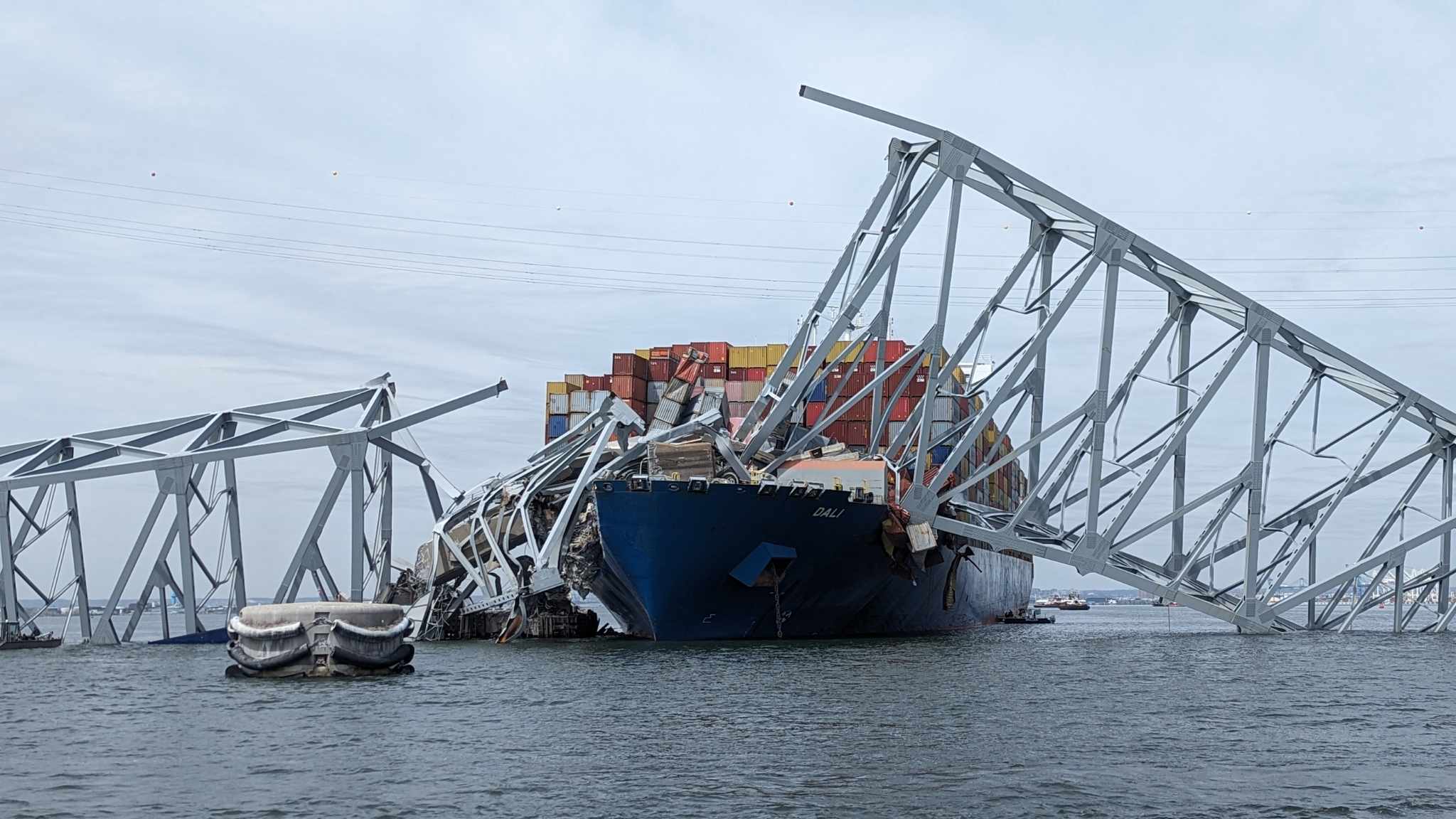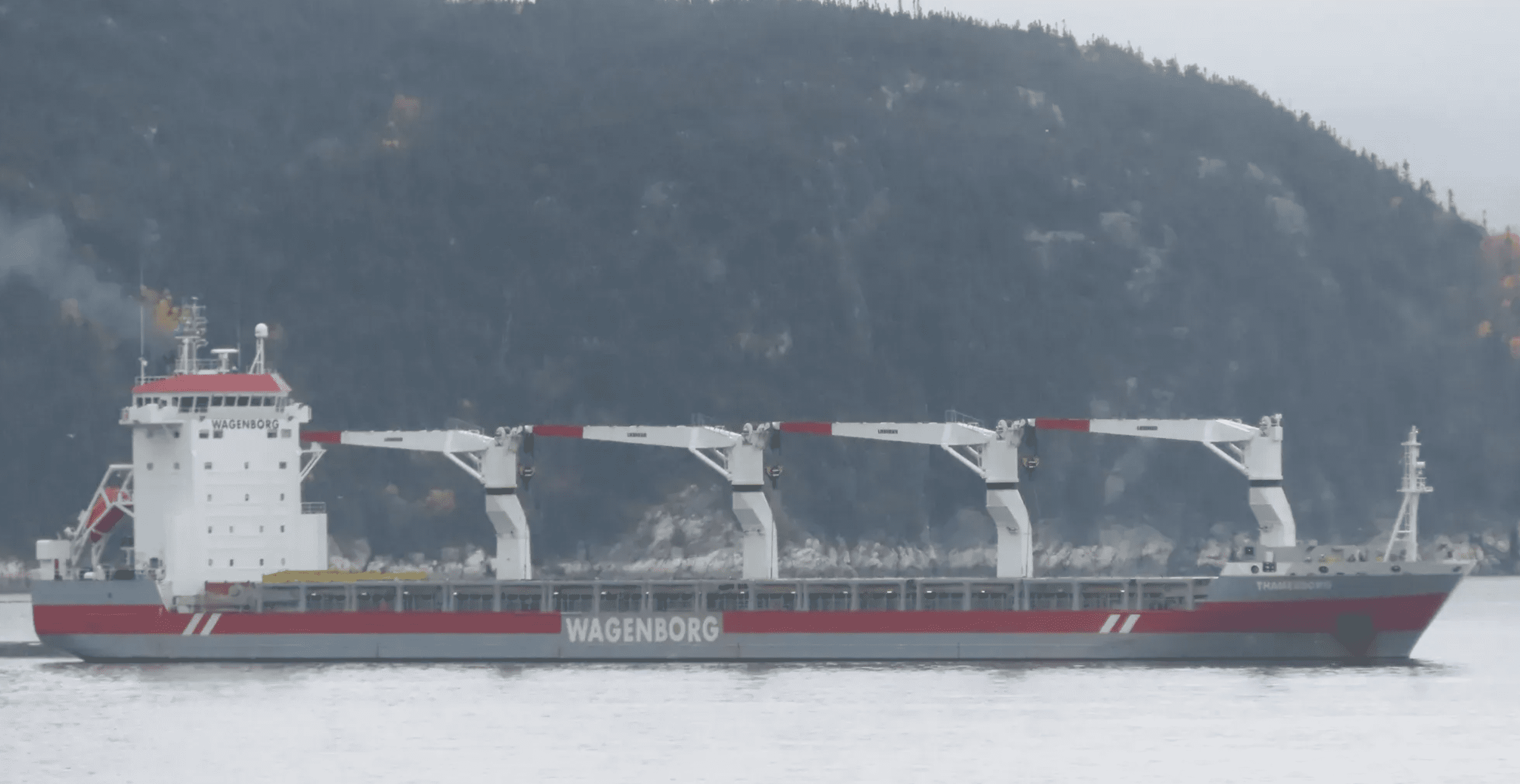The Anatomy of Allisions
By Captain John G. Denham.
The recent accidents on the waters of San Francisco Bay has triggered the attention of maritime afficiando and many others. 7 November 2007 the COSCO BUSAN allided with the San Francisco Bay Bridge and spilled thousands of gallons of fuel oil in the bay. On 11 January 2008 the barge CASCADE allided with the bridge at Point San Quentin and in the early morning hours of Wednesday 16 January the tug TRIG LIND with a barge carrying sand navigated its way into a bridge on the Petaluma River. On 14 February an inbound container ship lost power near Fisherman’s Wharf and drifted until tugs arrived.
COSCO BUSAN was piloted by a San Francisco Bar Pilot. The oil barge CASCADE was being towed by PACIFIC WOLF and the DELTA DEANNE and was exempt from mandatory pilotage; one of the tug captains was in charge of the navigation and movement of the flotilla. In the early morning hours the 71 foot tug TRIG LIND with a 206 foot loaded barge allided with the railroad bridge and caused minor damage.
The COSCO BUSAN allision investigation is reported complete as far as the state is concerned. 1 of 2 USCG Incident Specific Preparedness Review (ISPR) reports has been published. A California state Administrative Law Judge hearing has been set for 28 April 2008.That hearing will attempt to determine the cause, find fault and make recommendation to the governing agency, the SF Bar Pilot Commission. Thereafter, state and federal agencies will determine the parties considered negligent and or responsible and will undertake appropriate action as permitted by law. Later the state of California et al, will sue the COSCO BUSAN and the bar pilot for damages etc. Monetary awards will be adjudicated. Politicians will make rules. The cause, human error, will be announced but the reasons may never be fully explained, however there are plausible explanation for all the reported alleged facts.
The CASCADE’s allision with the bridge at Point San Quentin (San Rafael-Richmond Bridge) presents a different situation. The tug PACIFIC WOLF, an 111 foot, 4100 horsepower tug and the CASCADE an OPA 90 double hull 300 foot barge are reported to be owned and operated by K-Sea Transportation. The tug DELTA DEANNE a tractor tug,108 feet in length with 4400 horsepower is owned by BayDelta Maritime. The grieved appears to be the bridge i.e., the state of California. Responsibility and fault will have to be determined. Courts have defined the duties and responsibilities of tug masters and therefore the question of who was in charge will be of primary concern.
The number of recent accidents involving petroleum product is unquestionably going to generate political rhetoric and probably some unnecessary rule making unless the reason these accidents occurred is determined. There is a commonality. The existing laws, rules, regulations and procedures are more than adequate if adhered to. The process of determining the cause, or reasons, is complex as it indicates that those in the pilot house are not alone in their failures. The operational policies, procedures and the principles of proper seamanship and management are published and essentially known, but they are frequently over looked, or misunderstood.
The Navigation Rules of the United States and the international community state: ”Rule 2 RESPONSIBILITY. (a) Nothing in these rules shall exonerate any vessel, or the owner, master or crew thereof from the consequences of any neglect to comply with these Rules or of the neglect of any precaution which may be required by the ordinary practice of seaman, or by the special circumstances of the case.
(b) In construing and complying with these Rules due regard shall be had for to all dangers of navigation and collision and to any special circumstances, including the limitations of the vessels involved, which may make a departure from these Rules necessary in order to avoid danger.”
Except for ground vehicles, one should know that maritime accidents exceed all other forms of transportation accidents The daily number of maritime incidents is astonishing. Professional maritime people are aware of this and are attempting to resolve problems while they are also trying to stay in business. Government policies, competition and operating costs make safety and proper seamanship difficult partners for maritime companies transporting products for profit.
The San Francisco Bay area is a “sea town.” Passing through the Golden Gate each year are hundreds of vessels from all over the world seeking berths in Oakland, Alameda, Redwood City, San Francisco, Richmond, Martinez, Benicia, Port Chicago and berths as far east as Sacramento and Stockton. Water borne transportation is involved in nearly 80% of all the world’s products and the San Francisco bay area is a profitable Pacific Ocean transportation hub. The state and the San Francisco bay area maritime community through the Harbor Safety Committee and other dedicated groups have promulgated adequate guidance to increase safety.
San Francisco Bar Pilots (SFBP) licensed by the state of California must also have a USCG pilot endorsement on their USCG Merchant Marine license. Most vessels transiting in and out of the Golden Gate must employ SFBP. Certain U.S. vessels are exempt and, “Any nonself-propelled vessel in tow of a tug within the Bay of San Francisco, San Pablo, or Suisun, or between those bays, is exempt from pilotage charges unless a pilot is actually employed.” The California Code of Regulations Title 14, requires adequate steps to insure safety.
The COSCO BUSAN allision is an example of an accident that should never have happen if procedures were complied with. Whereas the oil loaded barge CASCADE although considered seaworthy and being towed by one tug and pushed by another was marginally prepared for the task assigned.
In maritime parlance, “the ordinary practice of seaman” infers an understanding of the laws, the requirement of the Navigation and Safety Regulations ( 33CFRPart 164 ) and the U.S. Navigation Rules, that state:”or of the neglect of any precaution required by the ordinary practice of seaman, or by the special circumstances of the case.”
The commonality in both allisions is the failure to comply with the ordinary practice of seaman.
The employed Bar Pilot, COSCO BUSAN’s captain and his bridge team were not organized, trained and prepared to manage the known ”special circumstance” they were about to encounter; fog.
The tug master of the PACIFIC WOLF in accepting the tow as seaworthy and departing from the berth at Rodeo, California was responsible to be knowledgeable of the special circumstances, familiar with the route and, as the person directing the navigation was required to maintain the flotilla in line. The special circumstances being: (a) the status of the current (b) the ability of the tugs to handle the tow,© the difficulty of the task involved.
The predicted ebb current in the vicinity of the bridge was approximately 2 to 3 knots, however with recent winter storms it could be as strong as 4.0 knots. The route from Rodeo to sea is not simple, but it’s well marked. The purpose of the assist tug is to help maneuver the tow. The 1.4 mile from the Bothers Light to the bridge requires precise control of the barge and proper navigation as the current can vary without warning.
The objective is to safely pass between the east and west towers of the bridge, near the centerline of the 1000 foot horizontal clearance on a course of about 284. If the tow is not in line and not on the center line and the length of the tow being 628 feet in length: (DeltaDeanne 108, Barge 309 + bridle 100 Foot, PACIFIC WOLF length 111 feet ) and the barge is canted, that clearance will be reduced.
933 tons 12,077 tons 822 tons Displacement
108 x 36) (309 x 76) (100) (111 x 24) = 628 feet
There has been a gradual, but increasing change in piloting. Reliance on electronic gadgetry has diminished the use of local knowledge and seaman’s eye. Since the advent of radar in ships (now almost every ship has at least two) the reliance on visual and audible knowledge has decreased. More and more training is being accomplished in electronic simulators that essentially discard natural visual/audible aids. Pilots no longer rely on familiarity of sound from buoys, horns whistles, bells and sirens located near prominent places and hazards and the visual and physical aids of nature. THE ORDINARY PRACTICE OF SEAMAN is not just a catch all but a polite and professional reminder, originated nearly two centuries ago by others that view our work to use good sense, apply due diligence and follow through in all tasks and duties and verify with certainty that Neptune’s laws are obeyed. Industry wide the forces of competition, greed and the blind service to schedule are again initiating a public distrust in the mariner’s regard for safety and doubt as to our ability to operate vessels safely; a status of historical relevance.
Without some effective form of enforcement, more incidents will occur. A program of continuing education and on-scene verification and re-certification is needed to guarantee that qualified experienced people are assigned to safely accomplish tasks with equipment that can function in the special circumstances they will probably incur. Also, managers and supervisory persons must be held responsible to verify that the requirements of the regulations, rules and procedures have been met. All shipboard systems include people. Although heretofore not included in the chain of command and responsibility, insurance companies, underwriters and government officials should be included in the verification and prevention process. Insurance eases the burden of responsibility and makes by-passing the ordinary practice of seaman acceptable.
Captain John Denham is a veteran of 66 years maritime experience in seamanship, ship handling, navigation, piloting, and education. he is also author of The Assistant and DD 891
and DD 891  .
.

 Join The Club
Join The Club










